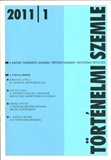A Thurzó család a Magyar Királyság arisztokráciájában. Egy különleges arisztokrata família Magyarországon
The Thurzó Family in the Aristocracy of the Kingdom of Hungary. An extraordinary aristocratic family in Hungary
Author(s): Géza PálffySubject(s): History
Published by: Magyar Tudományos Akadémia Bölcsészettudományi Kutatóközpont Történettudományi Intézet
Summary/Abstract: The study analyses the place of the Thurzó family within the aristocracy of the Kingdom of Hungary, where it belonged from 1521 until its extinction on the male line in 1636, on the basis of material from the archives of Vienna, Budapest and Bytøa (Slovakia). The history of the family is unique in more than one sense. Firstly, they are the only family among the Hungarian aristocracy in the 16th and 17th centuries to rise there from a burgher–entrepreneur background. Secondly, services of an economic the acquisition by Sebestyén Thököly of the title of a Hungarian baron in 1597. Thirdly, such a wide network of international relations, covering the whole of Central Europe (see Figure 1–2), was only boasted by the Zrínyi and the Pálffy families, and, in the 18th century, by the Esterházy and the Batthyány. Fourthly, until the middle of the 16th century the family was characterised by an astonishing variety of professions, for we find among them merchant bankers and politicians engaging in credit operations as well as a president of the Hungarian and Court Chamber and learned humanist prelates. Fifthly, the Thurzó was one of very few aristocratic families which (with the exception of one of the last members, the converted Adam) remained staunch supporters and patrons of Protestantism. Sixthly, the four generations which belonged to the aristocracy gave two palatines (György V and Szaniszló III) and one royal regent (Elek I who joined the aristocracy in 1521) to the Hungarian state, an achievement which was matched by only a handful among the old and new aristocratic families. Seventhly, all the heads of the family counted among the ten highest dignitaries of the country at the peak of their political career (see Table 1). And, finally, György Thurzó was the first member of the Hungarian aristocracy to obtain in Hungary the count title (Grafentitel) based on German roots in 1606 (see Table 2). Thus, the century-long history of the Thurzó family in Hungary, despite their unhappy end, was a real success story. In the light of this they certainly deserve the attention paid to them by Hungarian, Slovak, Czech, Polish, Austrian and German historians alike.
Journal: Történelmi Szemle
- Issue Year: 2011
- Issue No: 01
- Page Range: 63-84
- Page Count: 22
- Language: Hungarian

